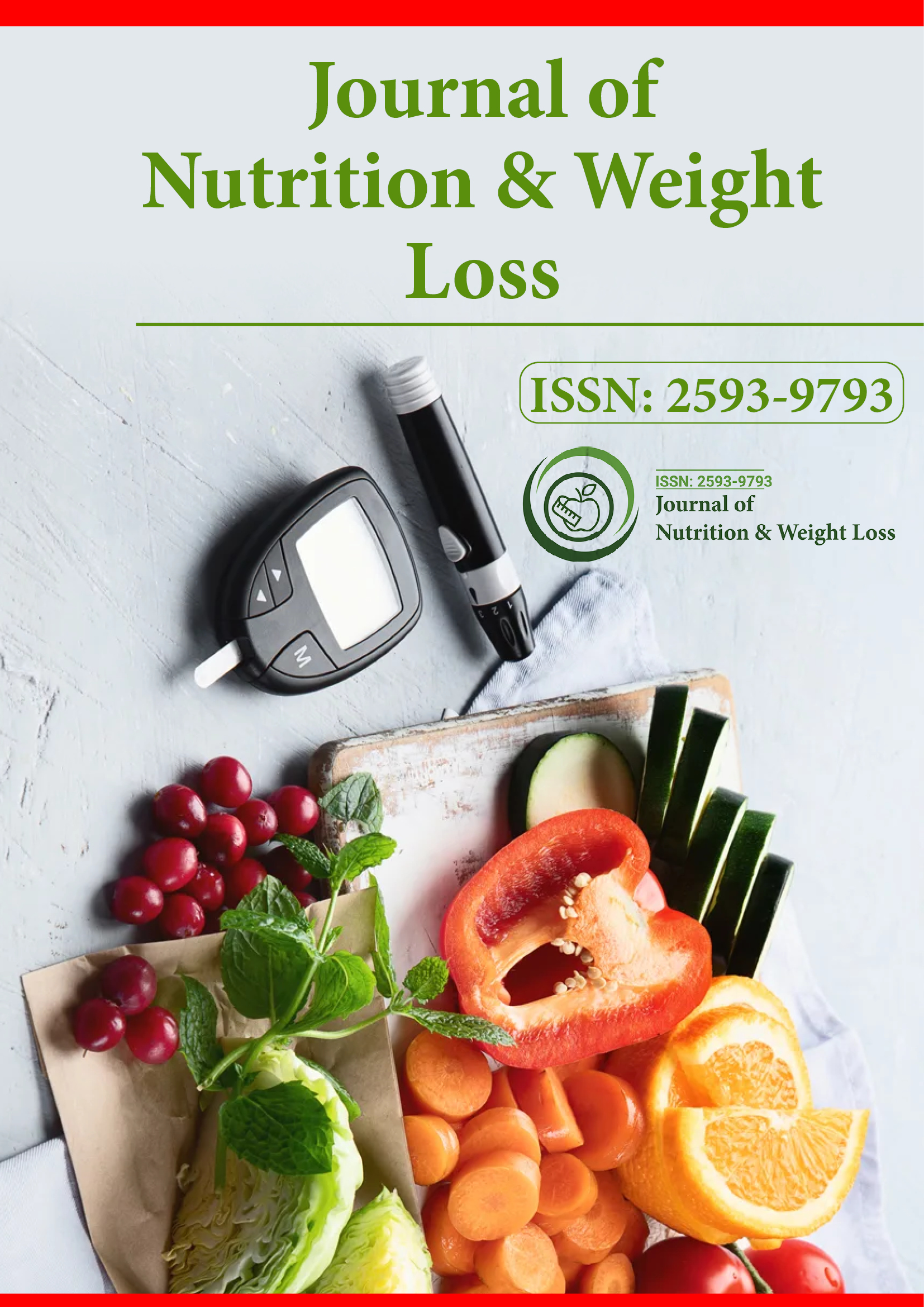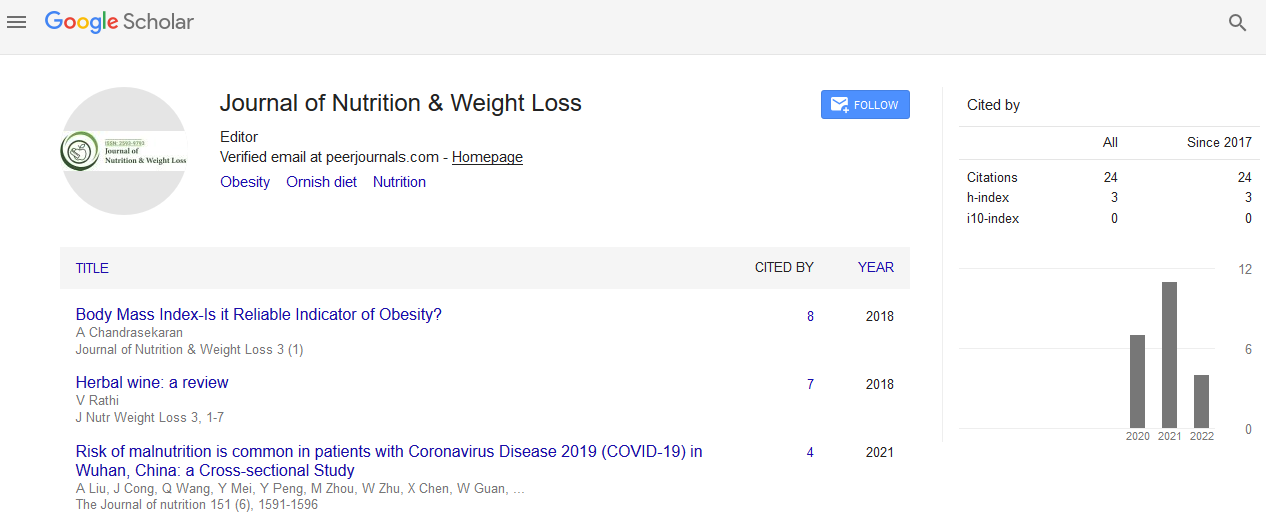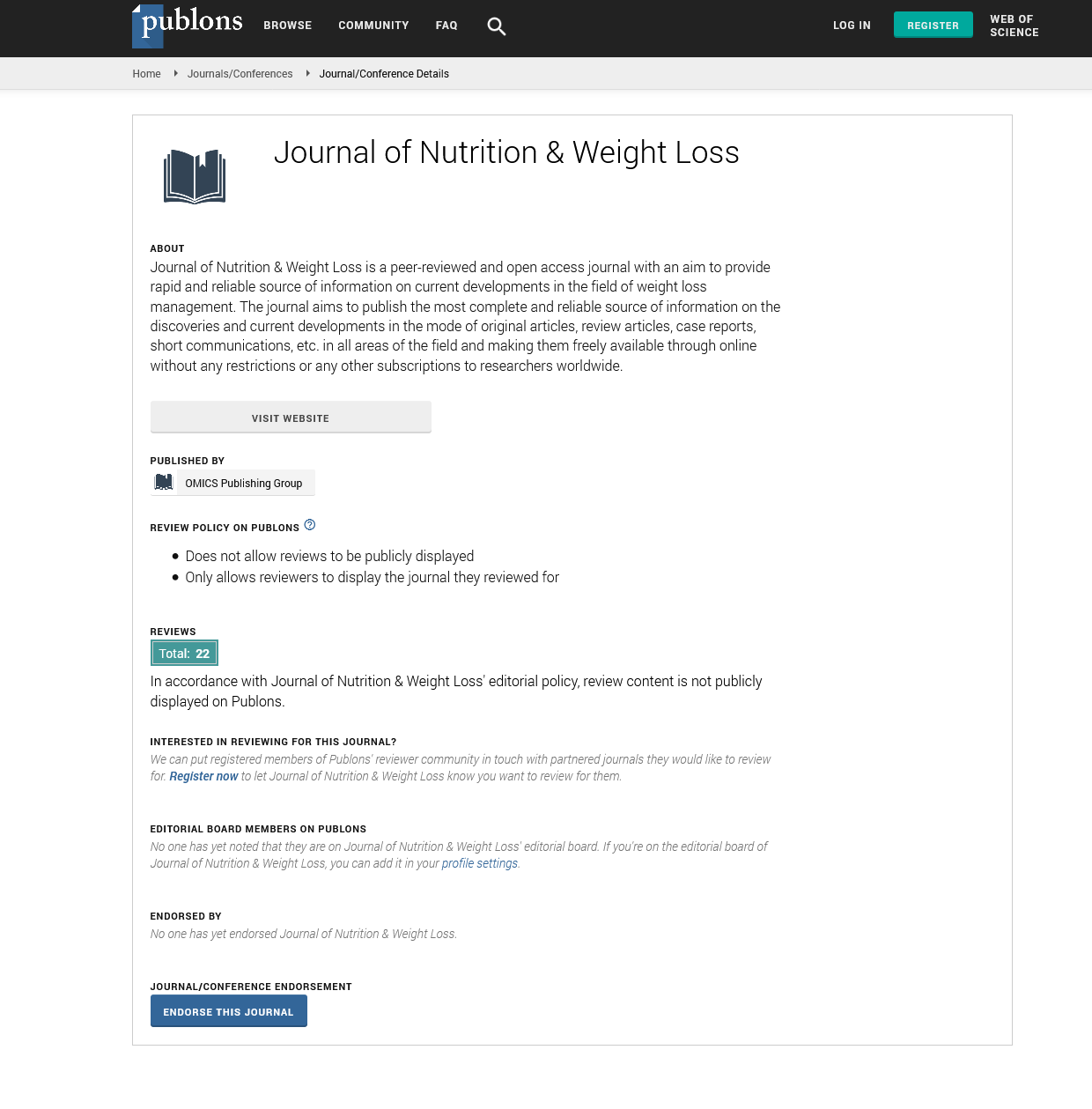Indexed In
- RefSeek
- Hamdard University
- EBSCO A-Z
- Publons
- Euro Pub
- Google Scholar
Useful Links
Share This Page
Journal Flyer

Open Access Journals
- Agri and Aquaculture
- Biochemistry
- Bioinformatics & Systems Biology
- Business & Management
- Chemistry
- Clinical Sciences
- Engineering
- Food & Nutrition
- General Science
- Genetics & Molecular Biology
- Immunology & Microbiology
- Medical Sciences
- Neuroscience & Psychology
- Nursing & Health Care
- Pharmaceutical Sciences
Commentary Article - (2022) Volume 7, Issue 6
Endoscopic Bariatric Therapy over Primarily Metabolic Techniques
Linnaeus Cuvier*Received: 10-Oct-2022, Manuscript No. JNWL-22-19224; Editor assigned: 13-Oct-2022, Pre QC No. JNWL-22-19224 (PQ); Reviewed: 27-Oct-2022, QC No. JNWL-22-19224; Revised: 03-Nov-2022, Manuscript No. JNWL-22-19224 (R); Published: 10-Nov-2022, DOI: 10.35248/2593-9793.22.7.153
Description
Endoscopic bariatric therapy is becoming more and more popular since it is less intrusive than bariatric surgery and more successful than dietary and lifestyle changes. Different endoscopic therapies use intestinal anastomosis or stomach remodeling to accomplish weight loss and metabolic advantages that have been scientifically proved. These therapies are analogues of the restrictive or bypass components of bariatric surgery. Others make use of cutting-edge modes of action, like aspiration treatment. Numerous studies have demonstrated the safety and efficacy of endoscopic sleeve gastroplasty and transpolar outlet reduction for endoscopic revision of gastric bypass. Data on gadgets' safety, efficacy, and cost-effectiveness will keep accumulating when they are given the go-ahead for use.
Bariatric endoscopists need to be ready to use different endoscopic bariatric therapies with the proper precision. The prevalence of weight-loss drugs, bariatric surgery, and diet and lifestyle modification programs has not decreased the severity of the obesity pandemic or the increasing burden of weight-related comorbidities such obstructive sleep apnea and diabetes mellitus. Prior too recently, individuals seeking weight loss treatments had to decide between more conservative approaches (such dietary and lifestyle changes) and bariatric surgery. Additionally, post-gastric bypass weight gain can be addressed with endoscopic technology without the need for temporary surgery.
Although weight loss is directly related to metabolic advantages, endoscopic methods for weight loss are preferred over primarily metabolic procedures. Excess weight loss, which is measured as the percentage of excess weight (weight above optimal weight) removed, is different from total weight loss. This requires being aware of alternatives, such as diet and lifestyle therapy, weightloss medications, and bariatric surgery, and making referrals for these when necessary. Before beginning EBT, organic causes for weight gain should be ruled out or treated.
Prior beginning EBT, patients should be assessed for eating disorders and referred for therapy. Intragastric balloon therapy has a number of contraindications, including previous gastrointestinal surgery, a significant hiatal hernia, and coagulation or bleeding disorders, cirrhosis of the liver, and pregnancy. Additionally, it has been suggested to inject 10 mL of methylene blue, which will turn the urine green in the event of a balloon rupture. A soft food diet followed by a liquid diet is needed in the days before removal, and the patient needs to abstain from eating for at least 12 hours before removal. A needle is used to completely aspirate the saline from the balloon during removal. These tools are designed specifically for removal and fit through the biopsy channel of the endoscope.
Given their extensive medical training, knowledge of gastrointestinal physiology, and expertise in endoscopic technique, endoscopists are highly qualified to handle obesity. The development of various effective and secure devices has been made possible by the field of bariatric and metabolic endoscopy. This has sparked a lot of interest in surgical and nonsurgical weight loss methods, especially given the low efficacy of diet changes and behavior modification. However, bariatric surgery is linked to a total weight loss (TWL) of between 20 and 33.3%, while intensive lifestyle modification and medication are linked to between 3.1-6.6% of TWL.
In addition, patients with IGB had much lower fluctuations in the hormones that control appetite, such as ghrelin, which reduced hunger and enhanced weight loss. In regions including Europe, South America, Asia, and the Middle East, the Orbera is among the most frequently used balloons. It is a single balloon system that is filled with saline and has a volume of 400 to 700 ml. It involves endoscopic implantation and removal, and it can be implanted for up to 6 months.
The balloon group had a mean of 5.7% greater TBWL than the lifestyle-alone group at 3 months following balloon removal (9 months after implantation). Most adverse events were stomach pain, nausea, and vomiting, which were managed conservatively with medication and supportive care. 44.3% of patients had their preoperative comorbidities, including as hypertension, diabetes, respiratory issues, dyslipidemia, and osteoarthropathy.The dual balloon design, which is removed six months after implantation, lowers the possibility of prosthesis migration. A prospective, randomized controlled experiment called the REDUCE pivotal trial was done in 2015 to assess the reliability and safety of the Reshape process. Patients who underwent the treatment had a lower 25.1%%EWL compared to the control group's 11.3%. Additional findings included a drop in BMI of 2.7 units compared to 1.3 for the control group and a 27.9% %EWL for completed patients. Due to pressure from the device tip, gastric ulcers were initially seen in 39% of patients. However, after modifications to the device, ulcer frequency was reduced to 10% and ulcer size was decreased from 1.6 to 0.8 cm. These ulcers were small, insignificant, and of no clinical importance.
Citation: Cuvier L (2022) Endoscopic Bariatric Therapy over Primarily Metabolic Techniques. J Nutr Weight Loss. 7:153.
Copyright: © 2022 Cuvier L. This is an open access article distributed under the terms of the Creative Commons Attribution License, which permits unrestricted use, distribution, and reproduction in any medium, provided the original author and source are credited.


